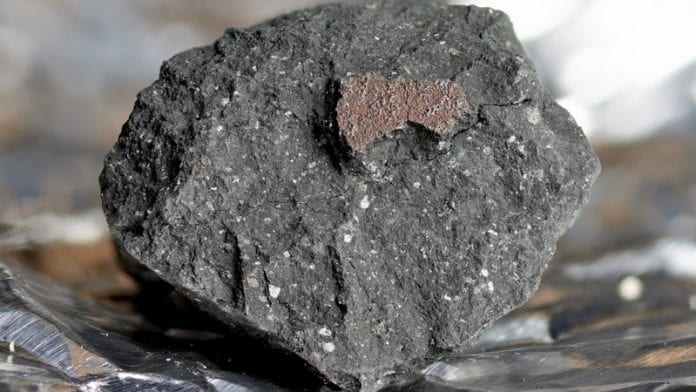Last month, when a fireball lit up the sky over the United Kingdom and northern Europe, a rare meteorite fell in Britain. It has been identified as a type that has never found in Britain previously. Other fragments of the fireball were also found in Winchcombe, Gloucestershire and are being kept under the care of museum scientists.
The Winchcombe meteorite is an extremely rare meteorite type known as a carbonaceous chondrite. They contain organics and amino acids. It will trigger an unprecedented research effort to find out more about the history and origin of the solar system and life on Earth.
There are around 65,000 meteorites on Earth that are known to us. Only 51 of the 1,206 fallen meteorites are carbonaceous chondrites. Researchers say that this is the first carbonaceous chondrite to be found in the UK and the first meteorite found in the UK in the past three decades.
The Rare Meteorite
Using the footage of the fireball from the public and UK Fireball Alliance Network, the meteorite was located. Around 300 grams of the rare meteorite made it through the Earth’s atmosphere and was found on a driveway. Before hitting the Earth’s atmosphere, it was travelling at a speed of 14 kilometres per second.
After its discovery on 28th February, other pieces were also recovered from the local area. According to experts, the meteorite was found in a good condition and very soon after reaching the Earth, could be compared to samples retrieved from space missions, in terms of quantity and quality.
Dr Ashley King is a UK research and innovation future leaders fellow in the Department of Earth Sciences at the Natural History Museum. He was one of the first people on the scene when the rare meteorite was discovered and has been advocating the handling and care of it.
He said, “Nearly all meteorites come to us from asteroids, the leftover building blocks of the solar system that can tell us how planets like the Earth formed. The opportunity to be one of the first people to see and study a meteorite that was recovered almost immediately after falling is a dream come true.”
Dr Richard Greenwood is a research fellow in planetary sciences at the Open University. He was one of the first scientists to identify the meteorite.
He said, “I was in shock when I saw it and immediately knew it was a rare meteorite and a totally unique event. It’s emotional being the first one to confirm to the people standing in front of you that the thud they heard on their driveway overnight is in fact the real thing.”
Professor Sara Russell is a merit researcher in cosmic mineralogy at the museum. She advised to take care of the meteorite.
She said, “The Japanese space mission Hayabusa2 returned around 4.5g of fragments from asteroid Ryugu to Earth in December last year, and at the museum we are helping to characterise this material. The Winchcombe meteorite fall is very timely as the rock is similar to Ryugu in many ways, and we can use the meteorite to rehearse for mission analyses.”
Further Reading:


